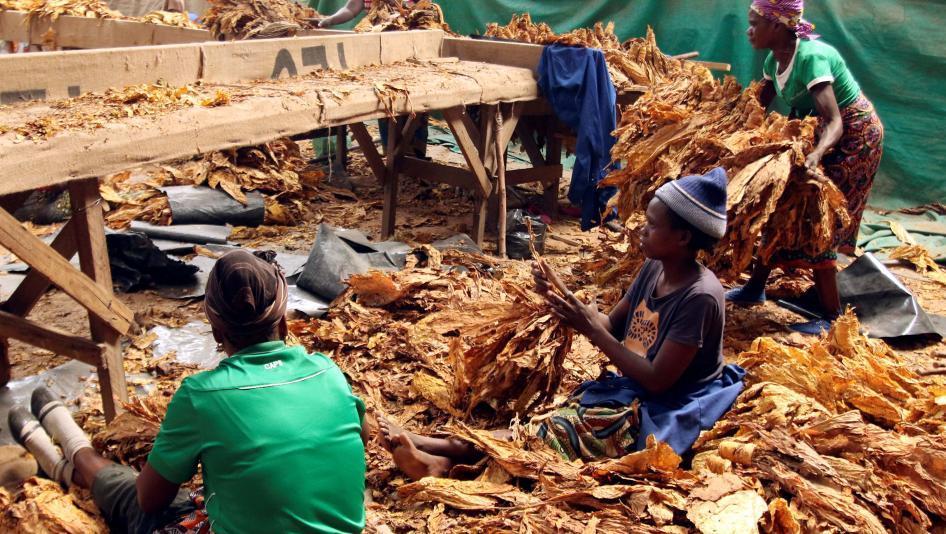Like any other agricultural crop grown in Uganda, tobacco growing follows a very strict Crop calendar
Click Here to View Crop Calender
hugely dictated by the climate and the weather patterns of different growing regions namely; Western, Middle North and the West Nile region.
The crop is mainly rain fed with only the nurseries raised under semi-irrigation through seedbed watering.
NURSERIES
Mother beds of 1.2m X 5m are laid and the soils sterilized with sufficient fumigant before sowing. Thereafter, the seedlings are reset in standard beds measuring 1.2m X 25m.
The seedlings are then routinely managed through application of chemicals that include; copper oxychloride & Dithane M-45 (Fungicide) and confidor as an insecticide for a period of between 30-45 days.
Other seedbed management practices include fertilization and seedling clipping for hardening before they are transplanted.
TRANSPLANTING
The hardened seedlings are then transplanted in the already ridged fields before applying NPK as a base fertilizer followed by CAN 26% for top dressing where/when necessary.
REAPING
Reaping involves the harvesting of the mature leaves from the primings, lugs, cutters, leaf, smoking leaf and finally the tips.
The curing process starts with the yellowing of the leaves before they are loaded into the barn and air and/or heat passed through depending on the crop type.
SORTING & BULKING
This involves selection of the leaves from the same plant position of the same length and color and with similar sporting or level of damages normally categorized as index.
Once this has been done, the sorted tobaccos are properly stacked in a compartment and covered with dry organic matter like banana leaves a process known as bulking.
GRADING & BALING
The properly conditioned tobaccos are then graded and baled using wooden baling boxes and wrapped in hessian cloths at average weights of between 60-70 Kilograms ready for re-drying and warehousing.
MARKETING & WAREHOUSING
The baled tobacco is then bought from our contracted farmers at our centralized buying points for the ease of quality control before being transported to our huge warehouses located in Hoima and Arua districts ready for processing and/or sale to our customers based on the orders received.

















